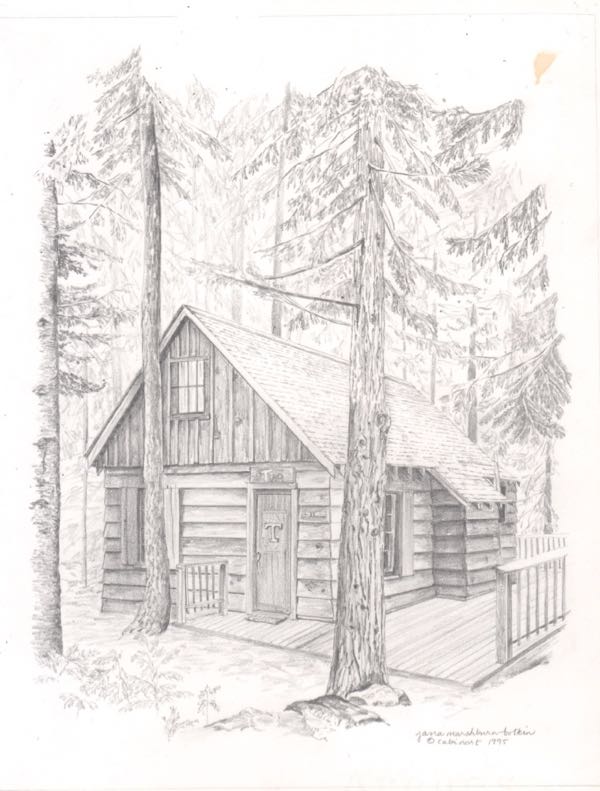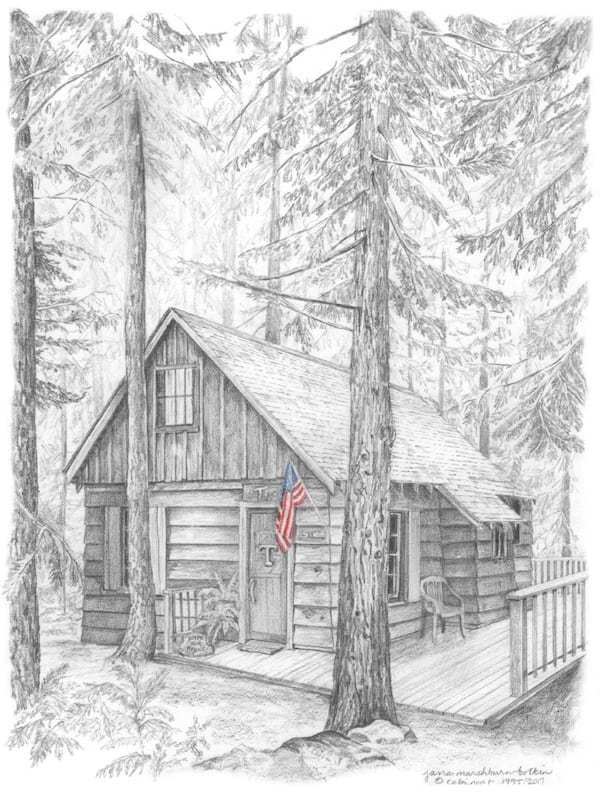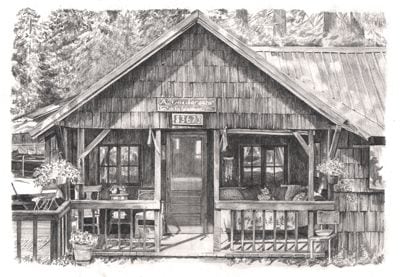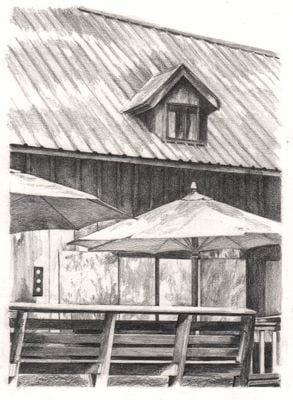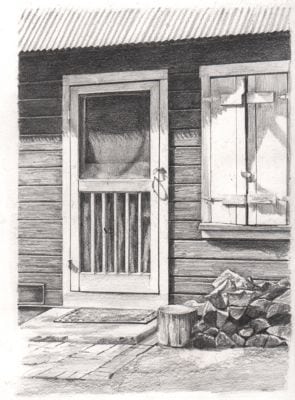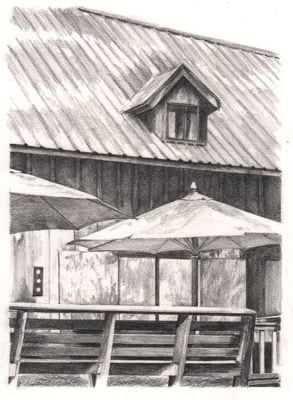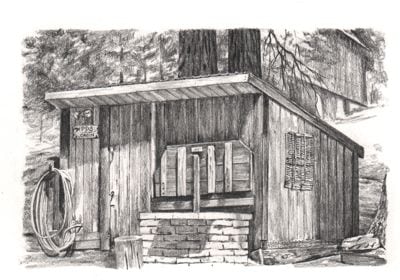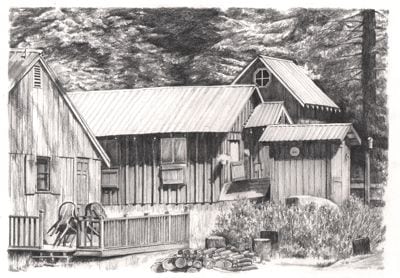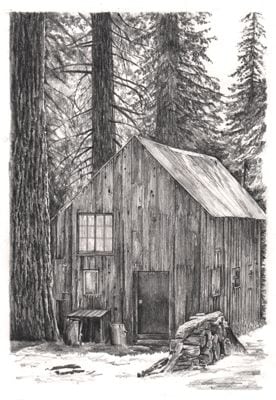My business and website is called Cabin Art or Cabinart. This is because when I began, I lived in a cabin and I drew cabins.
I still live in a cabin (part time) and still draw them.
Here is the latest commissioned pencil drawing of a Mineral King cabin:
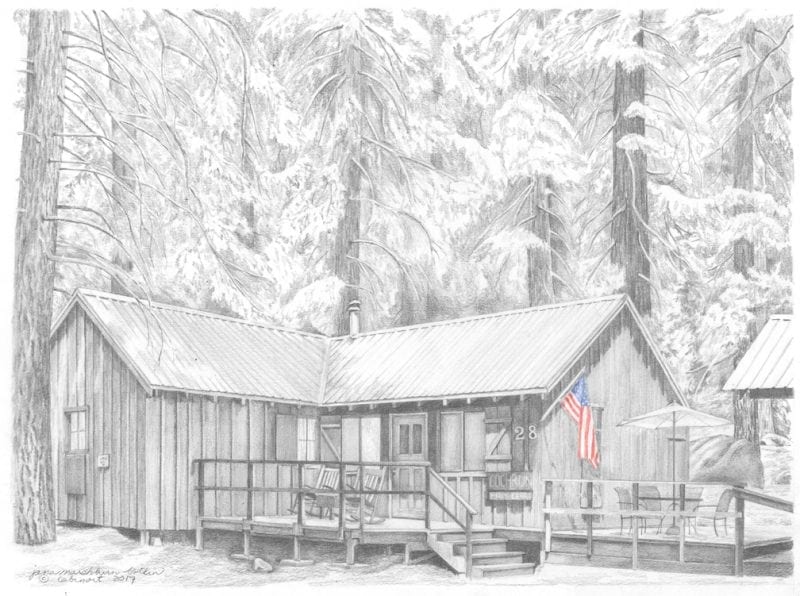
After seeing the Hume Lake cabin drawing from 1995 and reworking it, you can bet your boots that I was hyper-careful while working on this drawing. The photos were mine from 2 different photography sessions, there was much conversation about what should and shouldn’t appear, I used multiple photos to be certain of what I was seeing, and I went over the entire drawing with a magnifying glass at the end. In another 22 years, I don’t expect I will be able to repair or improve this one.
